

Going from a mere idea to a workshop that delivers results for your clients can feel like a daunting task. In this piece, we will shine a light on all the work behind the scenes and help you learn how to plan a workshop from start to finish.
On a good day, facilitation can feel like effortless magic, but that is mostly the result of backstage work, foresight, and a lot of careful planning.
Read on to learn a step-by-step approach to breaking the process of planning a workshop into small, manageable chunks.
Join the 150,000+ facilitators using SessionLab.
The flow starts with the first meeting with a client to define the purposes of a workshop. In other words, we are working on the assumption that the facilitator has already been chosen and hired for a job.
It’s also possible that you are designing a workshop agenda you have ideated yourself. You have a topic to share with your audience, and potential participants in mind: great! You can still use the same process, although not all steps may be relevant to your case.
We have divided the process of designing a workshop step-by-step into four sections. This structure is inspired by the insightful design methodology known as Dragon Dreaming, as codified by John Croft. The framework is an invitation to move in a structured way from dreaming to designing, from designing to doing, and from doing to celebrating and learning.
In this workflow, we will go through similar steps, albeit much simplified and adapted to this specific example. If you find this categorization intriguing and you’d like to learn more, here is a page about Dragon Dreaming project design. The methodology originated in Australia, and you can see a wink to its origin in how the design turns counterclockwise!

Each phase (vision, design, action and learning) is divided into subsections defining specific actions you need to take in planning your workshop. Each also includes a checkpoint with the client. These four meetings, plus a facilitation team meeting to draft the agenda, are described in detail in the accompanying Workshop Planning Template.
In the template, you will find ideas and inspiration for five one-hour meetings in which to:
I see this process as a dance between working alone and co-designing with a client. In this dance, two different ways of working interact, from being alone at the desk surrounded by sticky notes, to talking things over and getting feedback, into a new iteration of the design, and so on. Successful workshops all start, as most things do, with a vision, and a conversation. Let’s take the first step!

Every project begins as an idea in somebody’s mind, which really starts to take shape once it’s shared with someone else. In the first part of the process, we cover how to lead conversations that will move the idea from the abstract to a more concrete realm.
This process starts with a kick-off meeting attended by the facilitator, the client and, if applicable, other members of the team. To help you set it up, we have prepared a dedicated template complete with a workshop structure you can use to collect all the information from this visioning stage!
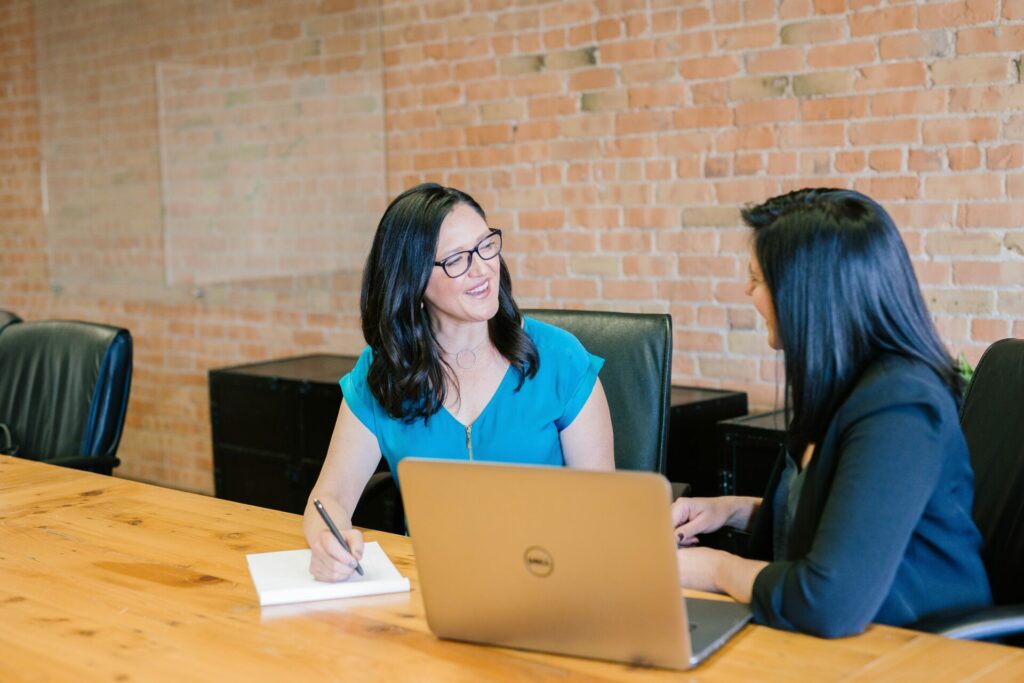
What are the desired outcomes of the workshop? Who will be the participants or what is your target audience? Once you have some initial answers to these questions, you can use them to shape a concept note, sign agreements, contracts and/or an MoU (memorandum of understanding).
The Vision phase in 4 stepsAccording to the State of Facilitation report, a majority of facilitators find negotiating with clients and stakeholders quite the challenge. In the survey on which the report is based, we asked over 1000 professionals what was hard for them in the previous year.
While the top challenge reported was “keeping up with the trends”, a series of matters more related to difficulties negotiating, designing and getting buy-in from stakeholders emerged as well. We hope the following workshop planning tips can help you overcome such obstacles.
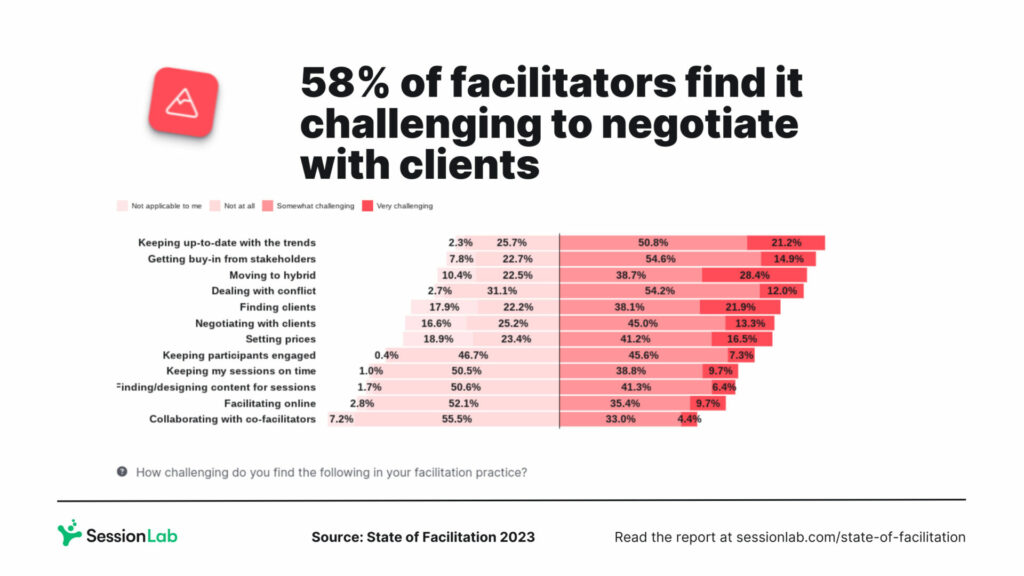
Designing based on the “why” is a necessary premise to prepare workshops that will prove meaningful to participants and clients. Often, though, this “why” is not entirely clear from the get-go. A skilled facilitator will use a range of communication skills such as probing questions, active listening, and appreciative inquiry to clarify intentions.
In most cases, it’s a matter of slowing the client down, and gently inquiring into their motivations. Run a mini-workshop with your client and transparently share what you are looking for. Time spent on this now will save time and resources by minimizing the risk of misunderstandings and re-writes later!
There are four key elements I check for when looking for desired outcomes with the client at this very early stage:
This involves probing how much power is allocated to participants into shaping future choices. Will proposals selected by participants in your workshop be adopted directly? Is this a consultation process someone else will turn into a decision later? Or, perhaps, the workshop is meant to inform and get buy-in on choices that have already been made?
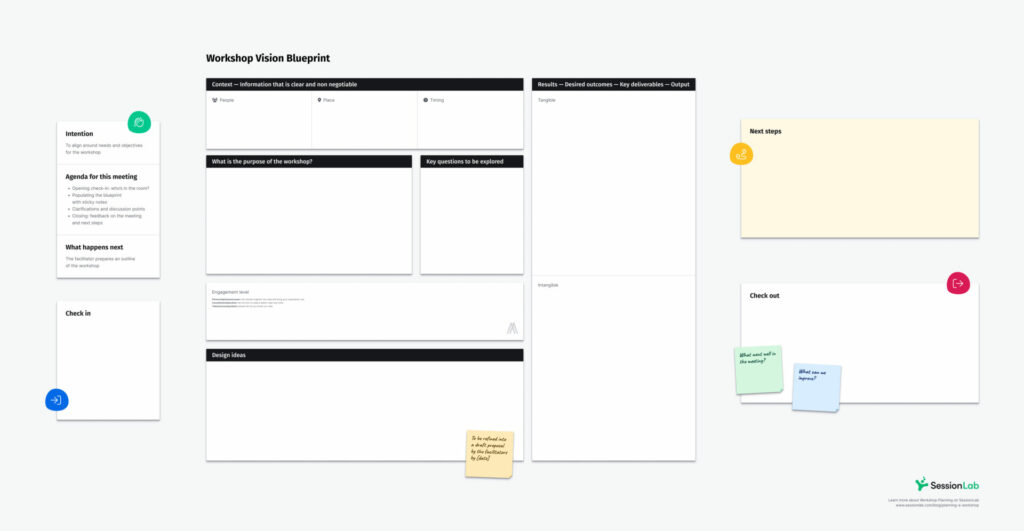
All these scenarios are possible and valid, but it’s important to know which one your workshop falls into, so as to minimize the risk of disappointment or confusion.
Once you have collected this information, you probably have an idea of where you want your workshop to focus. All you need now is to figure out who is it for before drafting a concept note and initial agenda.
Once you have clarity about the desired outcomes, it’s time to focus on your hypothetical participants and your target audience. You may already have a list provided by the client, or it may be a completely open invitation. In any case, it’s a good idea to spend some time focussing, after the “why”, on the important question: “who?”
Things that can be useful to consider doing at this stage, depending on the specific situation, include:

In the design stage, we are aiming to answer the question: how will this happen? This includes choosing dates and venues, drafting an agenda, creating a communication plan so that your workshop attendees will get the invite and join, populating a participant list, and refining your draft agenda into a detailed script.
The Design phase in 5 stepsA workshop begins to feel like it’s really going to happen once the date and location are decided upon.
Whether you are scouting for a location yourself or not, you still need to clarify and communicate a list of requirements clearly. Don’t give anything for granted! List any needs such as accessibility, type of space, and equipment such as tables or presentation equipment. No location is going to be perfect, but the clearer your request, the closer to ideal you might get.
If you’re running a virtual workshop, you still need to put it in the calendar and arrange for a virtual space to hold it in, such as a Zoom account and a whiteboard space. And if it’s hybrid, you’ll need to do both: scout for a location (with great wifi and acoustics, here you can read more about why that’s important) and set up online resources as well. If you don’t know yet what kind of room setup you will need, take a look at our detailed guide here.
Once the location has been chosen and booked, make sure you have an understanding with the location manager of how your session will work and what they can expect.
Will you be using masking tape to hang posters on the wall? Is that ok? How early do you expect to be at the location, and who will be there to open the doors? Will you need breakout spaces for smaller groups to work in? Will participants be milling around using outside spaces, which, and when? What about wifi use, passwords, and other tech needs?
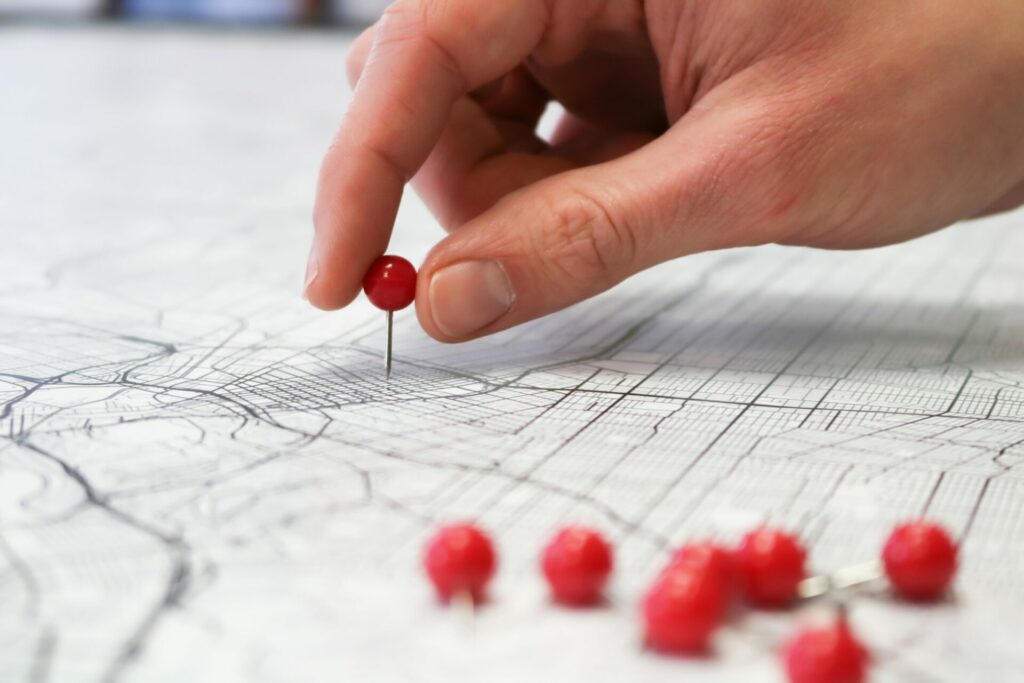
Having a persona in mind might help establish a schedule. Is this a personal development workshop that people sign up for as individuals (that will probably mean running it in the evening or on weekends?) Or is it going on at the workplace? When are employees free to attend, and what will not clash with previous engagements? Will it be a one-off thing or a series? Successful workshops take all this into account to ensure workshop participants can actually be there!
If you are working on a series of meetings for participatory planning and would like to encourage a diverse attendance, it could be a good idea to switch times and dates around quite often, so that people with different jobs and schedules can fit at least one meeting in. And get a babysitting service, or have someone who works with youth set up a related workshop with the young ones.
So now the word is out, and there is probably some time to wait before the workshop kick-off. This is the moment to sit down with yourself and work on the facilitation design. For many trainers and facilitators, this is a favorite part of the process.
Here is where we create a detailed schedule, choose activities and methods and assemble them into a coherent flow. You’ll seek to create a workflow that balances group discussions, experiential activities and different learning styles in order to meet your workshop’s purpose. Proper planning and a structured process is a proven way of turning a workshop idea into a reality.

The actual process of creating a draft agenda is quite personal. You may be working on it completely alone (hopefully, with a hot or cold beverage of your choice, and plenty of time!) or with a co-facilitator.
Results from the State of Facilitation report indicate that facilitators like to work directly with online tools, such as SessionLab, others, me included, prefer to start with pen and paper… or by taking voice notes while taking a walk!

However you approach the matter, you are likely to do all of these things (and more!), while not necessarily in this order:
And whatever you do, don’t forget to schedule some breaks! A successful workshop ensures that the workshop facilitator and all participants are able to participate and maintain their energy levels will learning new skills.
A successful workshop is one with a clear structure that supports the learning process. With the Session Planner, you can easily drag and drop your content blocks to quickly build an effective flow.
Start by creating a skeleton of each item in the workshop agenda. What time does the workshop start? End? How about lunch breaks? What is the main activity I want to place at the heart of things? Next, I can add additional content once I feel confident in the flow. SessionLab makes it easy to eventually shuffle things around as the plan changes.
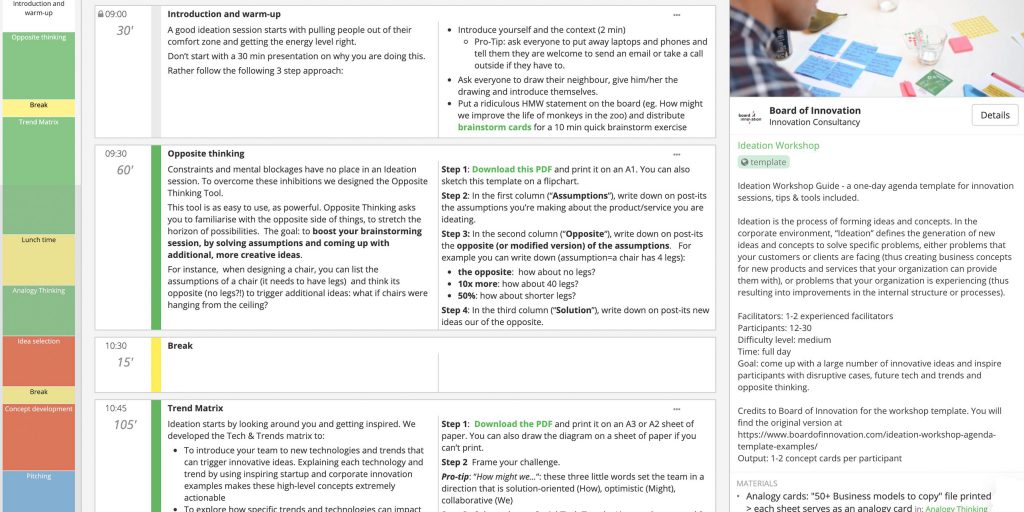
Once you have a solid agenda, it’s time once more to check in with the client. Run through the agenda together, checking that you share an understanding of what is going to happen, and making any needed tweaks and changes as you go. I always aim to share my reasoning with clients and share tidbits of facilitation along the way.
If you’re using SessionLab, you can invite clients and stakeholders directly to your agenda so you discuss and co-create in real-time or asynchronously. Collaborating in one-place can really help ensure your workshop preparation is smooth and that your session will meet your goals.
Refining the agenda is the subject of the third client/facilitator meeting detailed in the template that goes with this piece. The first thing to do is restate the high-level purpose and objectives of the workshop, before going into a review of details. This process encourages clarity and alignment, as well as enabling the facilitator to check whether the proposed agenda is fit for purpose.

This is also the stage in which, if I am facilitating a group discussions on a topic I am not familiar with, I’ll be doing research into that topic. Opinions about how knowledgeable, if at all, a facilitator should be about the topic under discussion vary greatly. Personally, my attention is on the dynamics of their conversation rather than on the content. Because of this, I don’t mind working with groups or companies who are talking about something I am not informed about.
At the same time, I find it useful to have at least a beginner’s understanding of the discussion. To enable this, I will ask clients to send me some papers or links to study. Mainly, I will be looking for jargon and terminology: I want to have at least a sense of what people are talking about and what terms to use myself. I also try and get a sense of what in the field is clear, and what is contested or up for debate.
Research can lead to changes to the agenda: in a recent workshop I chaired, reading some documentation led me to assume that terminology being used in the field was still not well-defined. Different stakeholders were using different terms to indicate the same things, or the same term to indicate different things!
I checked in with the client to verify if this was indeed the case and we decided to add a section discussing terminology at the beginning of the workshop. We did not aim to settle the argument once and for all, but rather to share with participants the current state of the art in this particular industry and agree on what terms we would use for the duration of the workshop.
This is also a great time to reconsider the implications of your setting. If you’re running a virtual workshop, how will you encourage participants to take part and explore ideas in such an environment?
Whether you are opening the workshop for participants to enroll or whether it’s the host preparing a list of attendees, it’s likely someone will be working to create a buzz around the event.
Often this is not handled by the facilitator directly but rather by a communication agency or office. That said, do your part by preparing material for dissemination and helping make sure the news reaches the right ears.
If you are not doing communication and enrollment yourself, avoid missteps (such as the advertising sending a message that is not aligned with your intention and design) by preparing such a brief well in advance.
A basic communication plan for your workshop should include:

Many hands make light work: now that you have your detailed agenda or script set out, you should have a clear sense of whether other people are needed to make it work. Will you need a tech host? An assistant to help with the practicalities? A video-maker? Photographer? Visual practitioner? If you need to assemble a team, it makes sense to onboard them once you know the agenda and tasks they will take on.
The other aspect of establishing who will be there is having a final (or “almost final”… there are usually last-minute surprises!) participant list. Registration can also be an interesting opportunity to collect information on your workshop attendees that might inspire some final details of the design.
When registering participants for a short (3-hour) leadership workshop for the international organization C40, besides asking for basic information such as names and emails, I added three optional questions concerning people’s motivation for joining, interesting initiatives they might like to share, and a blank space for “any other communications”.
This process was useful for me to start to get a sense of who was going to be in the room and adapt my choices and language to the audience. Furthermore, these questions can kick-start the workshop long before it begins by asking participants to start reflecting on a certain topic.
As the moment of running a workshop draws closer, there are some tasks to do that are very practical, having to do with implementing what has, up to now, existed in words only.
This is the phase for getting things done: assembling materials, briefing your team and any speakers, taking care of your inner work and preparation and then, in a leap of faith, trusting that all you’ve done is enough, finally doing away with plans, and going with the flow!
Running workshops can be tough work, so in this section we’ve collected some tips for managing workshop attendees (and yourself) that should help running the workshop easier!